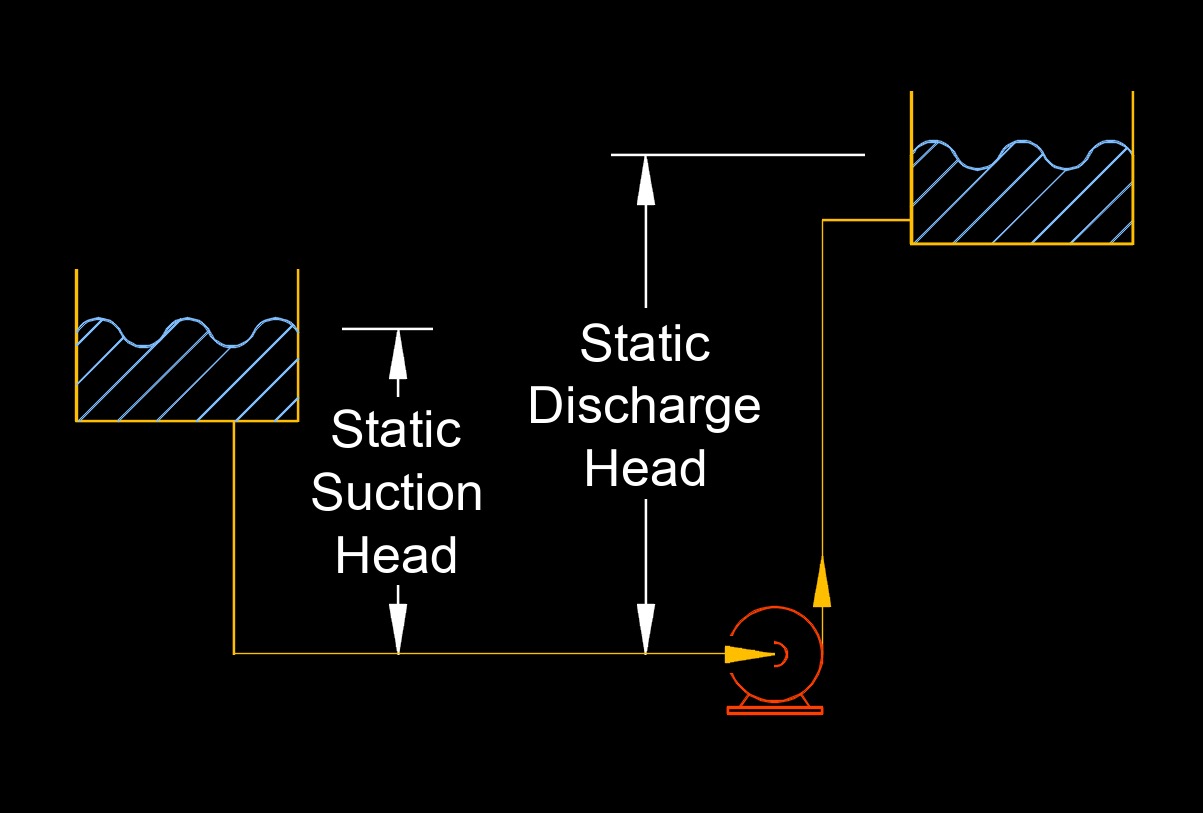Static Suction Head
Static Suction Head formula |
||
|
\( H_s \;=\; h_s - h_p \) (Static Suction Head) \( h_s \;=\; H_s + h_p \) \( h_p \;=\; h_s - H_s \) |
||
| Symbol | English | Metric |
| \( H_s \) = Static Suction Head | \(ft\) | \(m\) |
| \( h_s \) = Head Loss in the Suction Line due to Friction | \(ft\) | \(m\) |
| \( h_p \) = Pressure Head at Pump Suction | \(lbf \;/\; in^2\) | \(Pa\) |

Static suction head, abbreviated as \(h_{ss}\), often referred to as "suction lift" or "suction head," is a term used in fluid dynamics and engineering, particularly in the context of pumps and hydraulic systems. It refers to the vertical distance between the centerline of a pump's impeller (the rotating component that generates fluid flow) and the surface level of the liquid source or reservoir from which the pump is drawing fluid.
In simpler terms, static suction head represents the height from the liquid surface to the pump inlet. It's important because it influences the pump's ability to draw fluid effectively. The greater the static suction head, the easier it is for the pump to draw the liquid. Conversely, if the liquid source is located significantly below the pump, it might be more challenging for the pump to create the necessary suction to lift the liquid.
Static suction head is one of several factors that affect a pump's overall performance and efficiency. Other factors, such as pipe friction, velocity head, and dynamic head, also play a role in determining how well a pump can move fluid through a system. Engineers and designers consider these factors when selecting and designing pumps to ensure optimal operation and avoid issues like cavitation (formation and collapse of vapor bubbles in the liquid due to low pressure) that can arise if the pump's suction conditions are not well managed.

